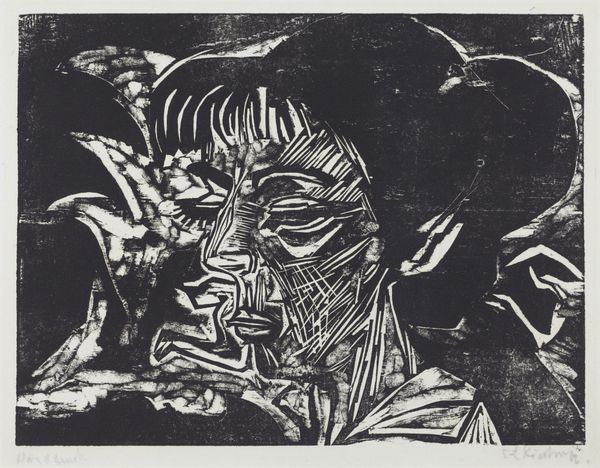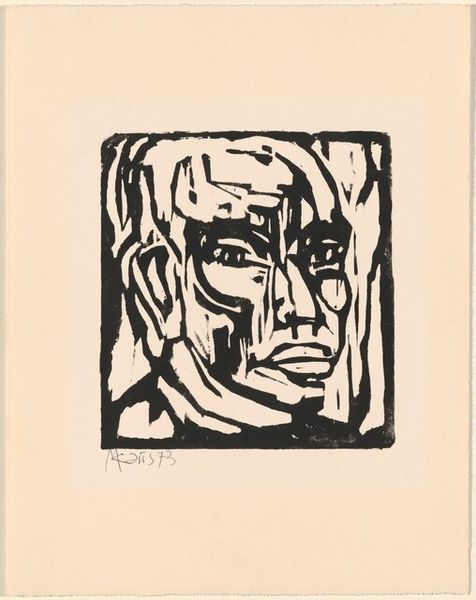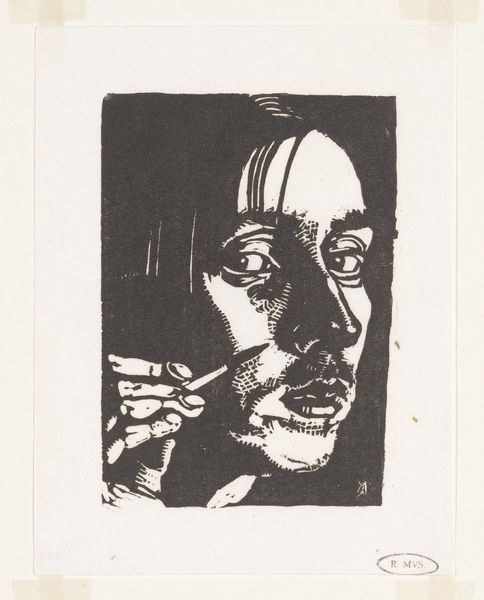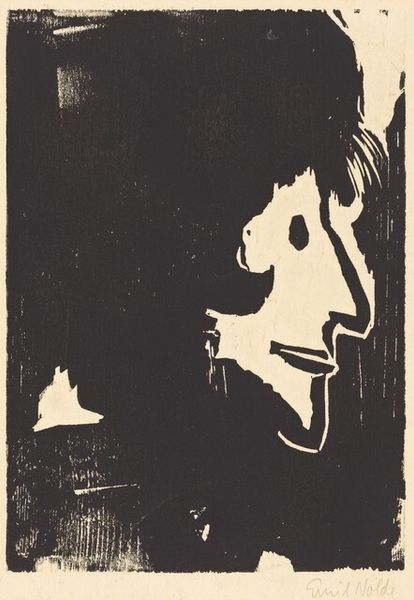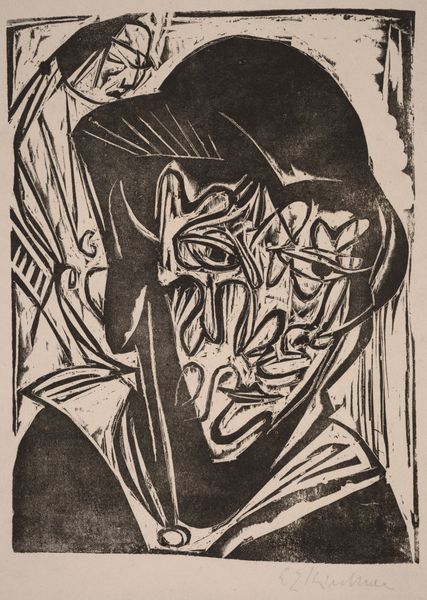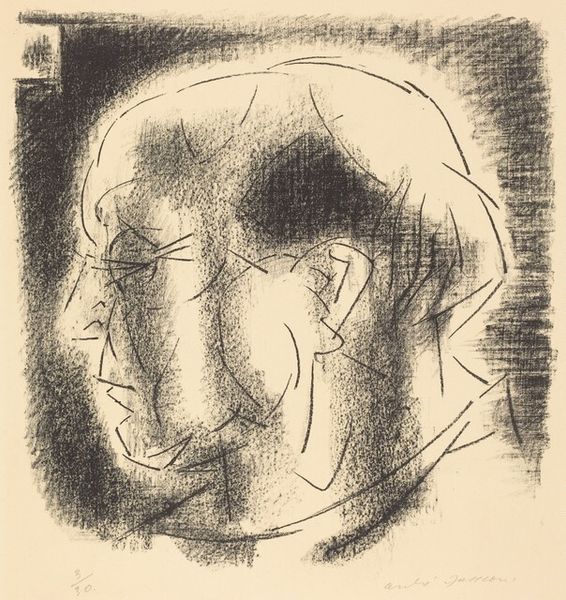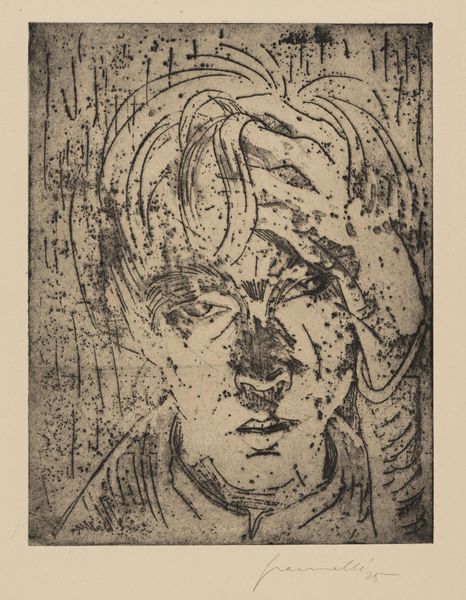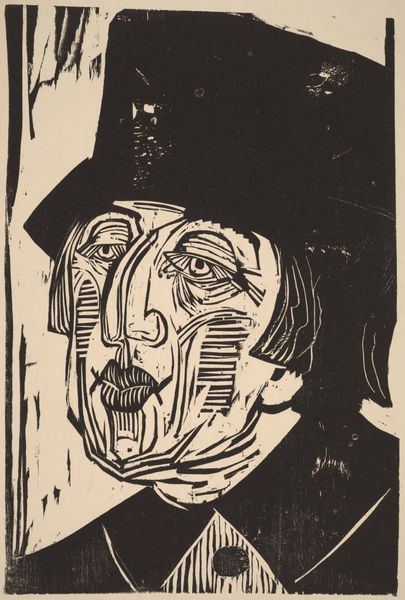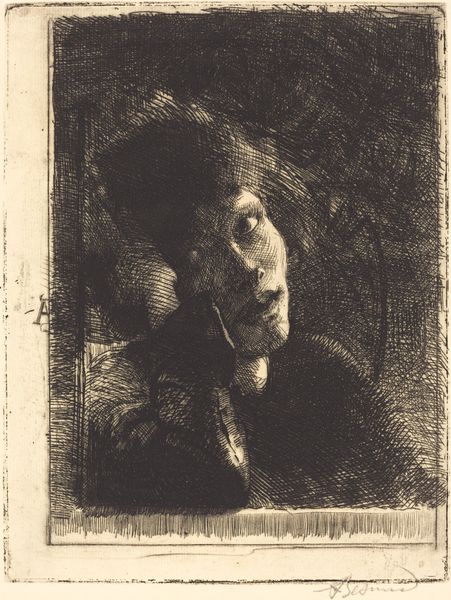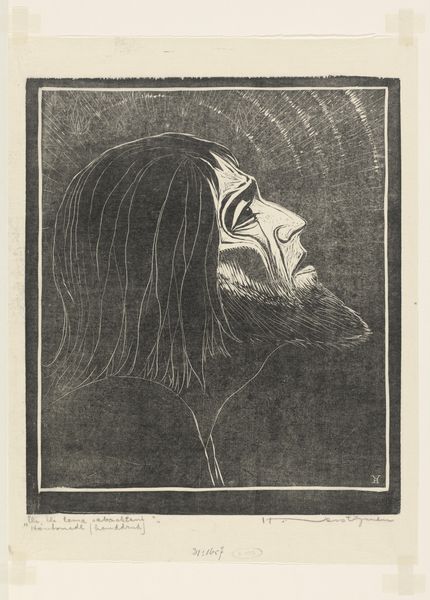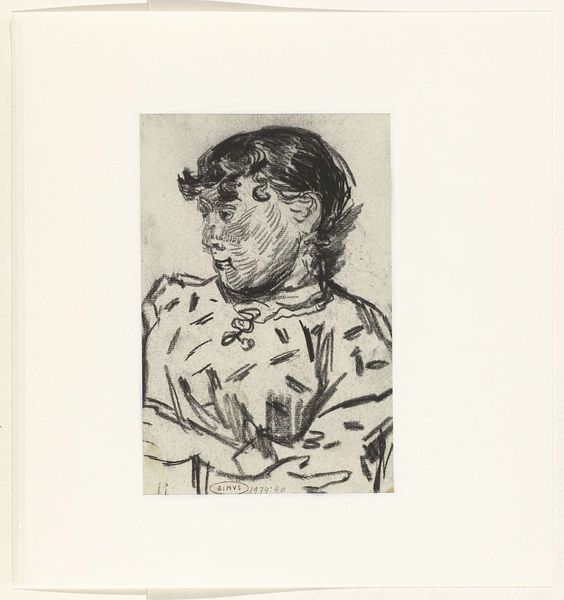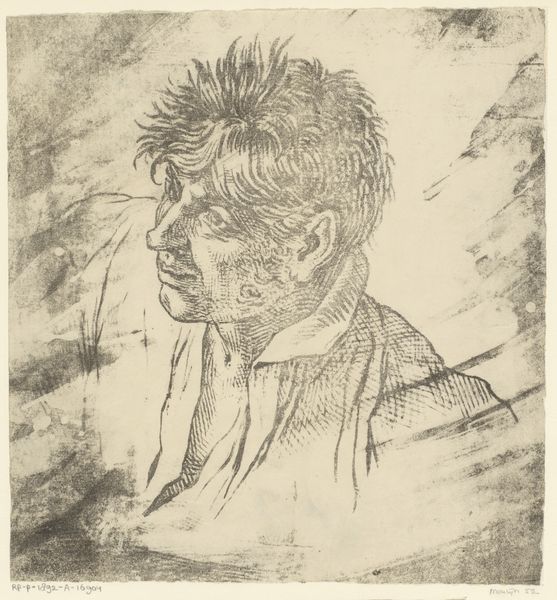
print, woodcut, graphite
#
portrait
#
shading to add clarity
# print
#
pen illustration
#
pen sketch
#
old engraving style
#
ink line art
#
ink drawing experimentation
#
pen-ink sketch
#
expressionism
#
thin linework
#
woodcut
#
limited contrast and shading
#
graphite
#
sketchbook drawing
Dimensions: height 310 mm, width 252 mm
Copyright: Rijks Museum: Open Domain
Editor: So this is "Amsterdamsche Vischventer," a 1928 print by J.Chr Haspels. It looks like a woodcut, stark and expressive. I’m immediately struck by the bold use of light and shadow. What do you see in this piece? Curator: I see a powerful statement about labor and identity in the early 20th century. The print's starkness reflects the harsh realities faced by working-class individuals. Haspels isn’t simply depicting a fish vendor; the artist presents the social and economic forces that shape the subject’s existence. Do you notice how the deep shadows almost overwhelm the figure? Editor: Yes, now that you point it out, the darkness seems to define him. Was expressionism a common way to portray people from lower social classes back then? Curator: Absolutely. Expressionism, particularly in its German iterations, often aimed to depict the psychological impact of industrialization and social alienation on everyday people. The use of the woodcut as a medium – with its inherent roughness – aligns with a desire to represent raw, unfiltered experiences. How does this understanding shift your perspective? Editor: It makes me consider the artist’s own position and possible commentary. Was Haspels aiming for empathy, or perhaps something more critical? Curator: It’s a crucial question! Exploring the artist’s background and other works could give us insights. Considering the time it was made, understanding expressionism helps see the social struggles depicted, not just a portrait, don’t you think? Editor: I completely agree. It’s not just a face; it’s a symbol. I had not considered the social aspect of art back then; it all becomes way more relevant now! Curator: Exactly, and this contextual awareness lets us unearth deeper stories behind the surface.
Comments
No comments
Be the first to comment and join the conversation on the ultimate creative platform.
